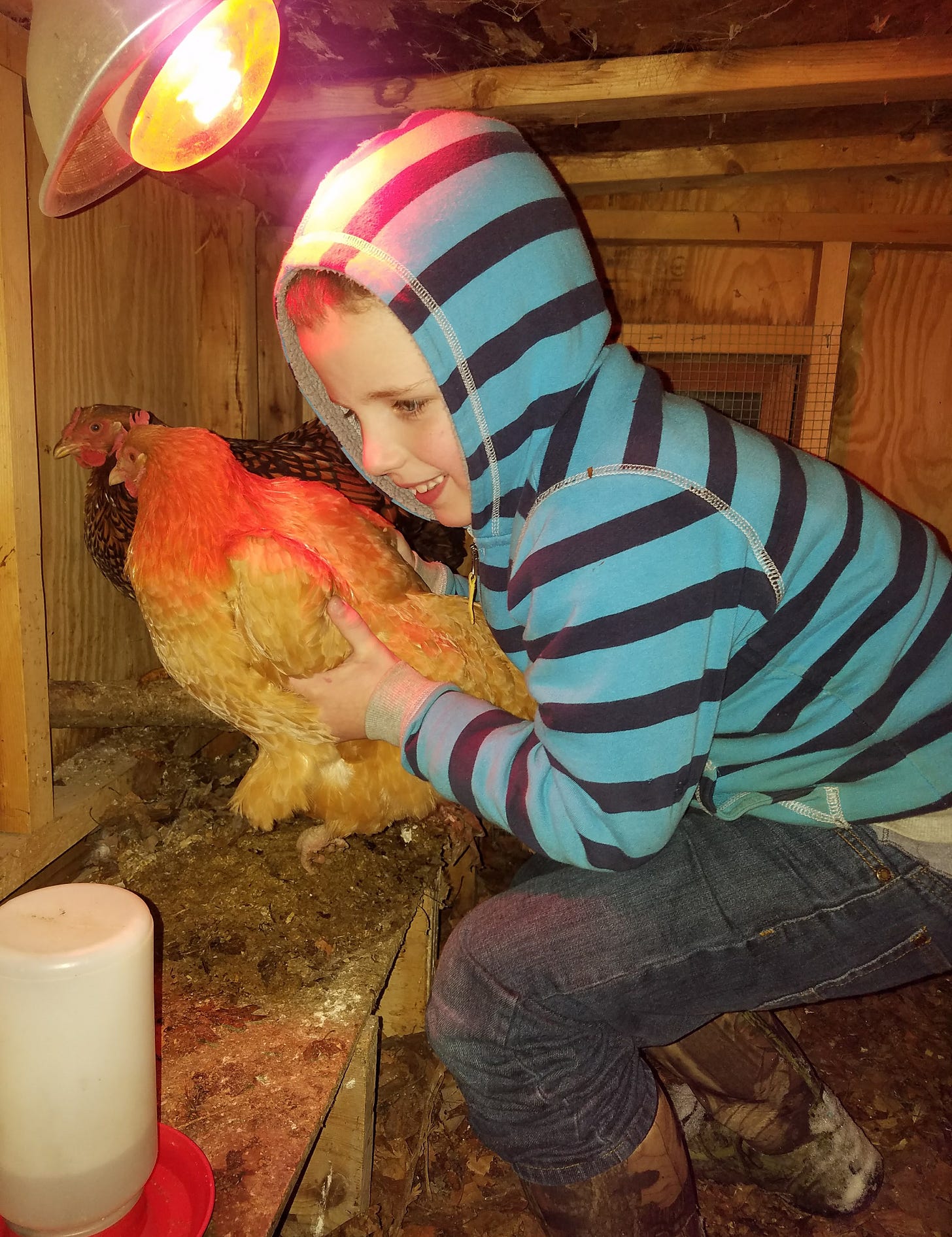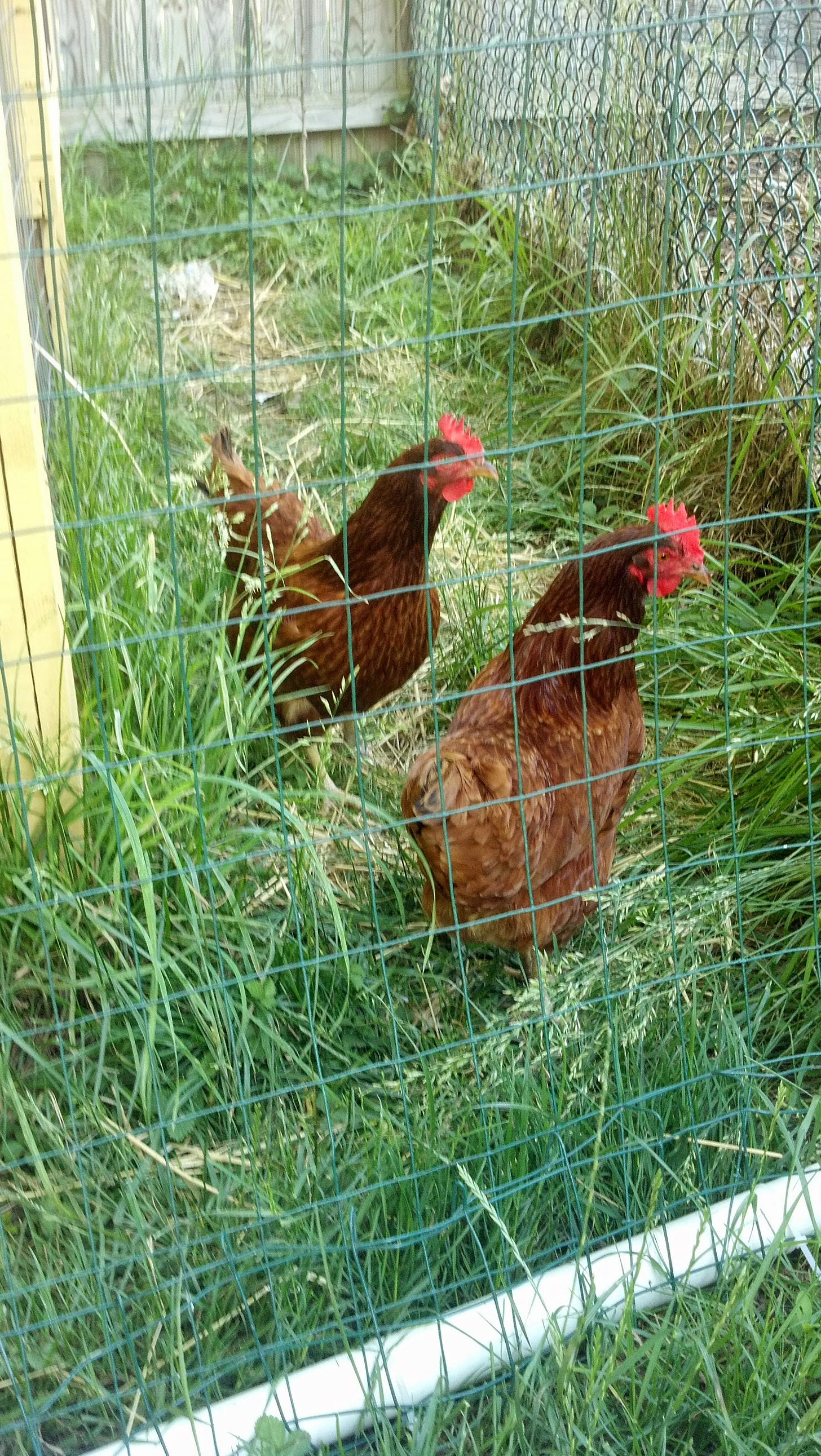Biosecurity for At-Home Poultry Flocks
The first in a series of how to become a little more self reliant...
Egg prices are headed up. HPAI is already here and our government is silent because … DEI?
This is the first in a series of essays to help people learn how to homestead without losing their minds.
First…start small. Start with chickens or rabbits. But also…know yourself. If your cat or dog is too much…farm animals are not going to help your mental health.
Know what your goals are…if it is eggs…get layers. If it is meat, get turkeys and rabbits. There are 1000 coop/hutch designs out there…buy one or build one. Make sure it is cleanable and you can get water and heat out there when it is cold.
Free range poultry is not nearly as fabulous as you think it is. Fence them in and move the fencing around. No one wants to step in chicken manure on the way to school.
Raising backyard poultry you with fresh eggs, natural pest control, and a deeper connection to food production. That said, animals die. Be prepared. In 2020 we lost ALL 100 of our chicks because they took 48 hours to get to us instead of 24. Animal husbandry is not for the faint of heart and maintaining a healthy and secure flock requires strict biosecurity measures to prevent disease, contamination, and external threats (other people and animals mostly).
Effective biosecurity involves a lot of work: I am going to briefly touch on production area security, animal health monitoring, feed and water protection, physical security, and proper handling of hazardous materials. Is it a lot? Yes. But by learning and implementing these measures, you can safeguard your flocks and contribute to overall animal health and food safety.
A secure production area is critical to preventing contamination and unauthorized access to essential supplies. The thing is… as a home producer, your production area starts at your feed store. Talk to them about biosecurity. If they look at you like you have 3 heads…send them this essay. Tractor Supply, while great for a lot of things, has a FRIGHTENING level of biosecurity protocols. Ask your feed store about their food safety and security measures.
Healthy flocks come from adequate stocking density. Can you raise a chicken in an area the size of a piece of writing paper? Yes. Should you? No. Give your animals some dignity and respect. Sunshine, scraped out housing and clean and secure food and water sources are fundamental to preventing disease. Storage tanks for potable water and water reuse systems should be kept in a way that other animals cannot get to them.
At home, feed and medicines should be stored in stout bins that rodents and other pests cannot penetrate. Food additions should be evaluated for their biosecurity risk. One of my favorite things to feed the chickens was the leftover Halloween candy. Turn sugar into protein! But I routinely turned down open bags of feed from others because I didn’t want to spread disease. Record-keeping plays a deep role in figuring out how your flock is doing. Write down (or take pictures of) the lot numbers of the feed you are buying. These measures help to quickly identify and address potential health or safety concerns in the flock.
Animal Security
Your flock is made up of individuals. Just like you, they don’t want to know everyone. Access to animal enclosures should be limited to people without contact with other farms to prevent disease introduction and stress. Stock rotation, following a First In, First Out (FIFO) approach, ensures that older birds are managed properly before new stock is introduced. If you are adding to the flock, quarantine new additions for 30 days before introducing them.
Daily health assessments should be conducted, focusing on feed intake, behavior, breathing patterns, and gait. If any birds appear sick then get on the interwebz and see what you think is going on. Most vets are NOT seeing small flocks, but it is worth trying to find a vet (IN YOUR STATE because that’s how we are licensed) to talk to. Many of us have chickens and can point you in the right direction.
The MOST important thing you can do with a small flock is LOOK AT THEM every single day. Are there any swollen crusty eyes? Has anyone not moved since yesterday (and is not sitting on eggs). Anyone turning purple or have a swollen wattle? Are the feet okay? Pick up your poultry and feel for their keel (the breastbone) if it is too prominent…feed your birds more. If they are getting foot ulcers, feed them less and/or make sure they are on proper bedding.
Physical Security
Preventing unauthorized entry onto the property and into chicken enclosures is the most obvious aspect of biosecurity. Clearly marked farm boundaries, fences, and “No Trespassing” signs can deter unwanted visitors. Entry points should be secured with locks/alarms/ring cameras. Your perimeter should be routinely monitored for signs of suspicious activity and for signs of diseased animals. The geese are dropping dead folks, don’t let them be on your property when they do. Adequate outdoor lighting further discourages wildlife as well as trespassers. Additionally, all windows, vents, and access points to hutches should be secured to prevent wildlife from entering.
Chemical and Hazardous Material Control
Handling and storage of hazardous materials, including pesticides, cleaners, and sanitizers, is no joke and 100% necessary for both flock and human safety. Farming is basically the most dangerous childhood activity. Keep medicines and cleaner in a restricted area or locked storage.
When Something Goes Wrong
In the event of a suspected issue, do not just hope it goes away, you must do something. If your flock up and dies, whether it is from foxes or HPAI, you must do something. Sick birds should be quarantined in a designated area downwind and downstream from healthy stock to prevent cross-contamination. If your poultry dies, double bag it and dose with a 10% bleach solution (9 parts water to 1 part bleach, always add the bleach last). Keep your pets away (especially the cats). Call your state veterinarian.
Maintaining a strong biosecurity program for at-home chicken flocks will help you sleep at night. Having poultry (or rabbits and the above is applicable to them too) is AMAZING. Of everything about my life homesteading in Maine I miss the most…I miss the chickens.
Remember to have fun with them too. Knit them sweaters! Take pictures! Enjoy the eggs! And when the time comes, put them in the stew pot. And for God’s sake…wash your hands!







My largest contamination potential seems to be from wild birds entering the pen to look for leftover scratch. I’ve considered netting the entire pen but I think they’ll just end up sitting on the poles used to support netting. I have a backyard flock of ten currently in 500 sq ft of space. Numbers have been as high as 35 but that was a lot of work and needed a lot more room. I do not free range because chicken poop everywhere is very unpleasant. I learned they very early in. I’ve kept chickens for about 14 years now. I do have a vet clinic who sees chickens if I need a professional assessment. I do morning and evening observations to see if anything is off.
Thank you! So important to write down or photograph type and lot number of feed